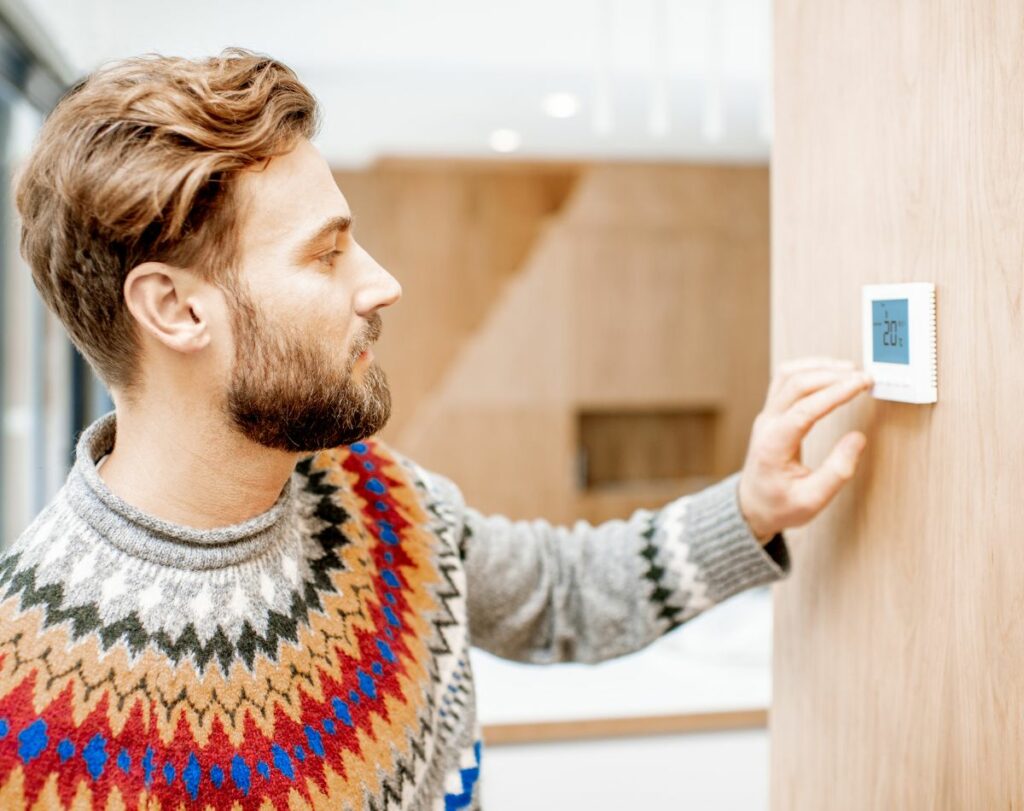Fixing Cold Spots in Your Home - 4 Easy HVAC Tips

Cold spots in your home can be frustrating and uncomfortable. They disrupt the coziness of your living space and can make it unbearable to come home and go from room to room with temperature inconsistencies. It often indicates an issue with your HVAC system, which can be even more alarming.
If you notice drafts and cold spots in your home, don’t worry, though – we have 4 easy solutions any homeowner can do today to fix cold spots. Sometime’s is as simple as upping your insulation and clearing away space around your vents.
Improve the temperature in your home with 4 tips to improve whole home heating today and get rid of pesky cold spots for good.
4 Tips to Reduce Cold Spots in Your Home
1. Check for Proper Insulation
One of the main reasons for cold spots in your home is inadequate insulation. Insufficient insulation allows cold air to seep into your living spaces, creating noticeable temperature variations from room to room.
To fix a lack of insulation, we recommend conducting a thorough inspection of your home’s insulation. Check for gaps, cracks, or areas where insulation may be lacking, particularly in attics, crawl spaces, and walls. If possible, invest in high-quality insulation materials and consider professional installation for optimal results.
Proper insulation not only helps to maintain consistent temperatures but also improves energy efficiency, reducing heating costs in the long run. Check around windows, doors, and more if you notice the changes are more prominent in one room vs another.
2. Optimize Airflow Through Your HVAC System
Another common reason for cold spots in your home is poor airflow within your HVAC system. Poor airflow means that the hot air isn’t flowing properly and getting to each room equally.
To enhance HVAC airflow and minimize temperature differences, start by cleaning or replacing air filters regularly. Clogged or dirty filters are the most common reason for restricted airflow, leading to uneven heating or cooling throughout your home.
You also want to ensure that all vents and registers are unobstructed and free from dust or debris. Make sure furniture or other obstacles aren’t blocking the air. Consider adjusting the dampers in your ductwork to balance airflow between different rooms, directing more warm air to colder areas.
Sometimes, it’s the simplest fixes that lead to the best results.

3. Seal Leaks and Drafts
Leaky windows, doors, and ductwork can significantly contribute to cold spots in your home by allowing cold air into your home and warm air to escape.
Our Maryland HVAC experts recommend conducting a thorough inspection of your home’s exterior and interior for any signs of leaks or drafts. Seal gaps around windows and doors with weatherstripping or caulking to prevent air leakage. In winter, consider seasonal plastic wrap to add an extra layer of protection.
Each season, inspect ductwork for cracks or gaps and seal them using duct sealant or metal tape. Investing in double-pane windows can also improve insulation and reduce heat transfer, helping to eliminate cold spots and improve overall energy efficiency.
4. Upgrade Your Thermostat
A programmable or smart thermostat can be the game-changer you need when it comes to maintaining consistent temperatures and reducing cold spots in your home. Advanced smart thermostats allow you to customize heating and cooling schedules based on your daily routines, ensuring that your home is always at the desired temperature.
Consider upgrading to a smart thermostat vs a programmable thermostat that offers remote access and energy-saving features, allowing you to monitor and control your HVAC system from anywhere via a smartphone app.
By optimizing temperature settings and reducing energy waste, you can effectively eliminate cold spots while also saving on utility bills. This provides you the best control and influence over your home temperature, even when you’re away.

Fix Cold Spots Today with HVAC Inspections and Maintenance
Fixing cold spots in your home doesn’t have to be a daunting task. By implementing these four easy HVAC tips, you can easily address temperature inconsistencies and create a more comfortable living environment for you and your family.
From ensuring proper insulation to optimizing airflow and sealing leaks, taking proactive measures to maintain your HVAC system can lead to significant improvements in comfort and energy efficiency. You’ll reduce home energy bills and be more comfortable all year long.
Remember to prioritize regular HVAC maintenance in Maryland and consider upgrading to advanced thermostat technology for enhanced control and convenience. With these simple yet effective strategies, you can say goodbye to cold spots and enjoy consistent warmth throughout your home.
Get a consult with our HVAC company today for even more tips and tricks.
Read More: Winter HVAC Maintenance 101: Your Seasonal Checklist
Recent Posts

Get in Touch with Shamrock HVAC Services
- 3932A Ten Oaks Rd #F Dayton, MD 21036
- Office: (301) 854-3495
- Fax: (301) 854-3497
- shamrockservicehvac@gmail.com
- Serving Maryland, DC, and Northern Virginia
How to Fix Cold Spots in My Home – Common Questions
Cold spots can be caused by any number of factors, including poor insulation, drafty windows or doors, inadequate heating systems, duct gaps or damage, or even structural issues such as gaps in walls or floors. Look for insulation, gaps, blocked vents, and more to find the most common causes of cold spots in homes.
You can identify cold spots by physically feeling for areas that are noticeably colder than others. If certain rooms never seem to get up to temperature, check the air vents for proper air flow or gaps around windows. Add a thermostat to each room to check to see if the temperature is improving.
Depending on the severity and complexity of the issue, consulting with a professional HVAC technician or home energy auditor may be beneficial. They can assess your home’s specific needs and recommend the most effective solutions for eliminating cold spots. HVAC companies can easily look at your thermostat, ducts, ductwork, and air filters for easy to fix issues.
Regular maintenance of your home’s heating system, periodic checks for insulation integrity, and sealing any new drafts or gaps that may develop can help prevent cold spots from recurring in the future. Additionally, investing in energy-efficient upgrades can provide lasting improvements to your home’s comfort and energy efficiency.
-

Shamrock HVAC Services has been offering air conditioning and HVAC maintenance services for homes and businesses since 1965. Our mission is simple: provide honest, reliable service that stands head and shoulders above the rest.
➜ Get a $90 Heating and Cooling Check
